小白学Pytorch系列–Torch.nn API Padding Layers(4)

| 方法 | 注释 |
|---|---|
| nn.ReflectionPad1d | 使用输入边界的反射来填充输入张量。 |
| nn.ReflectionPad2d | 使用输入边界的反射来填充输入张量。 |
| nn.ReflectionPad3d | 使用输入边界的反射来填充输入张量。 |
| nn.ReplicationPad1d | 使用输入边界的复制来填充输入张量。 |
| nn.ReplicationPad2d | 使用输入边界的复制来填充输入张量。 |
| nn.ReplicationPad3d | 使用输入边界的复制来填充输入张量。 |
| nn.ZeroPad2d | 用零填充输入张量边界。 |
| nn.ConstantPad1d | 用常值填充输入张量边界 |
| nn.ConstantPad2d | 用常值填充输入张量边界。 |
| nn.ConstantPad3d | 用常值填充输入张量边界。 |
nn.ReflectionPad1d

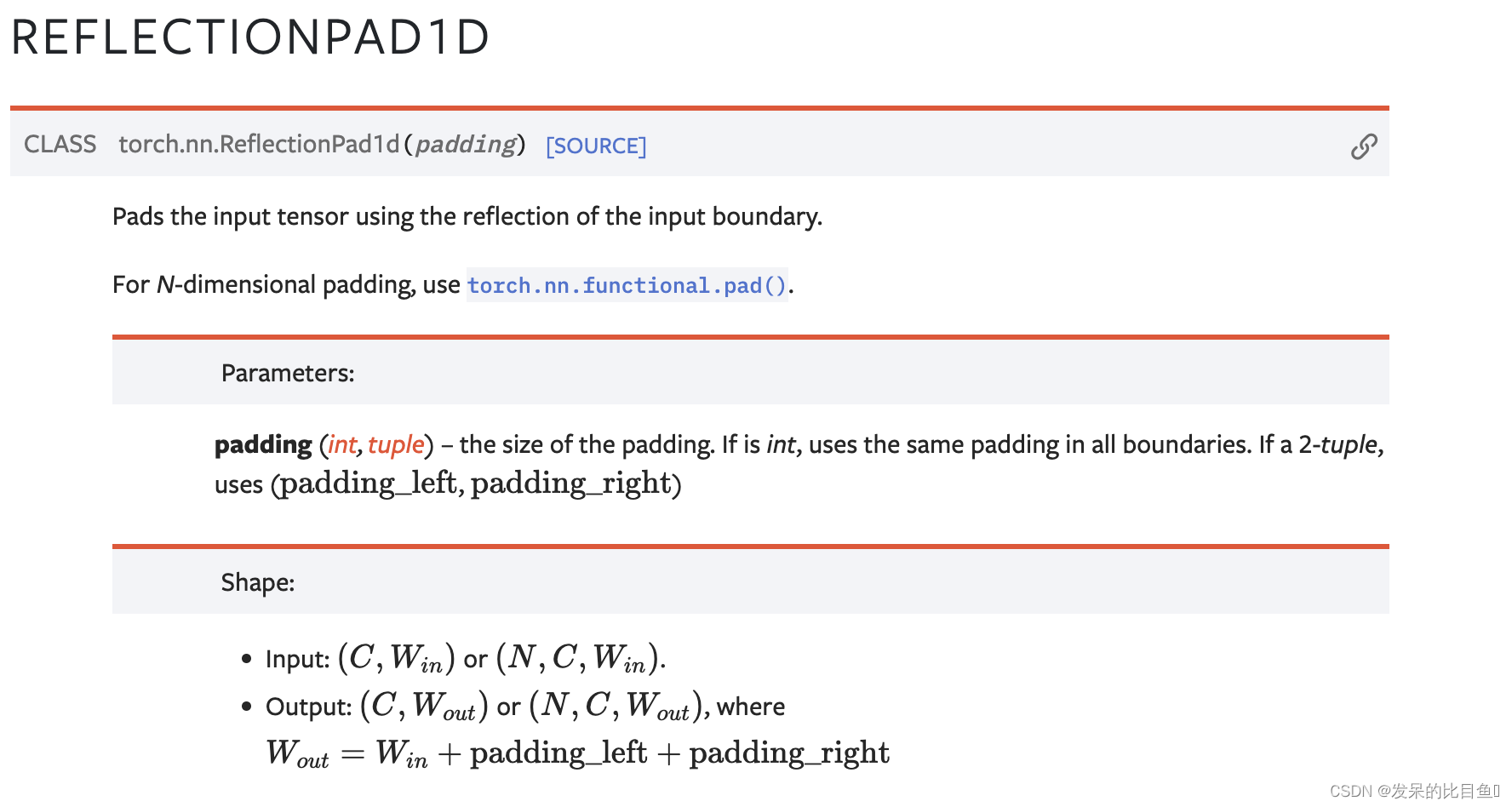
>>> m = nn.ReflectionPad1d(2)
>>> input = torch.arange(8, dtype=torch.float).reshape(1, 2, 4)
>>> input
tensor([[[0., 1., 2., 3.],
[4., 5., 6., 7.]]])
>>> m(input)
tensor([[[2., 1., 0., 1., 2., 3., 2., 1.],
[6., 5., 4., 5., 6., 7., 6., 5.]]])
>>> # using different paddings for different sides
>>> m = nn.ReflectionPad1d((3, 1))
>>> m(input)
tensor([[[3., 2., 1., 0., 1., 2., 3., 2.],
[7., 6., 5., 4., 5., 6., 7., 6.]]])
nn.ReflectionPad2d
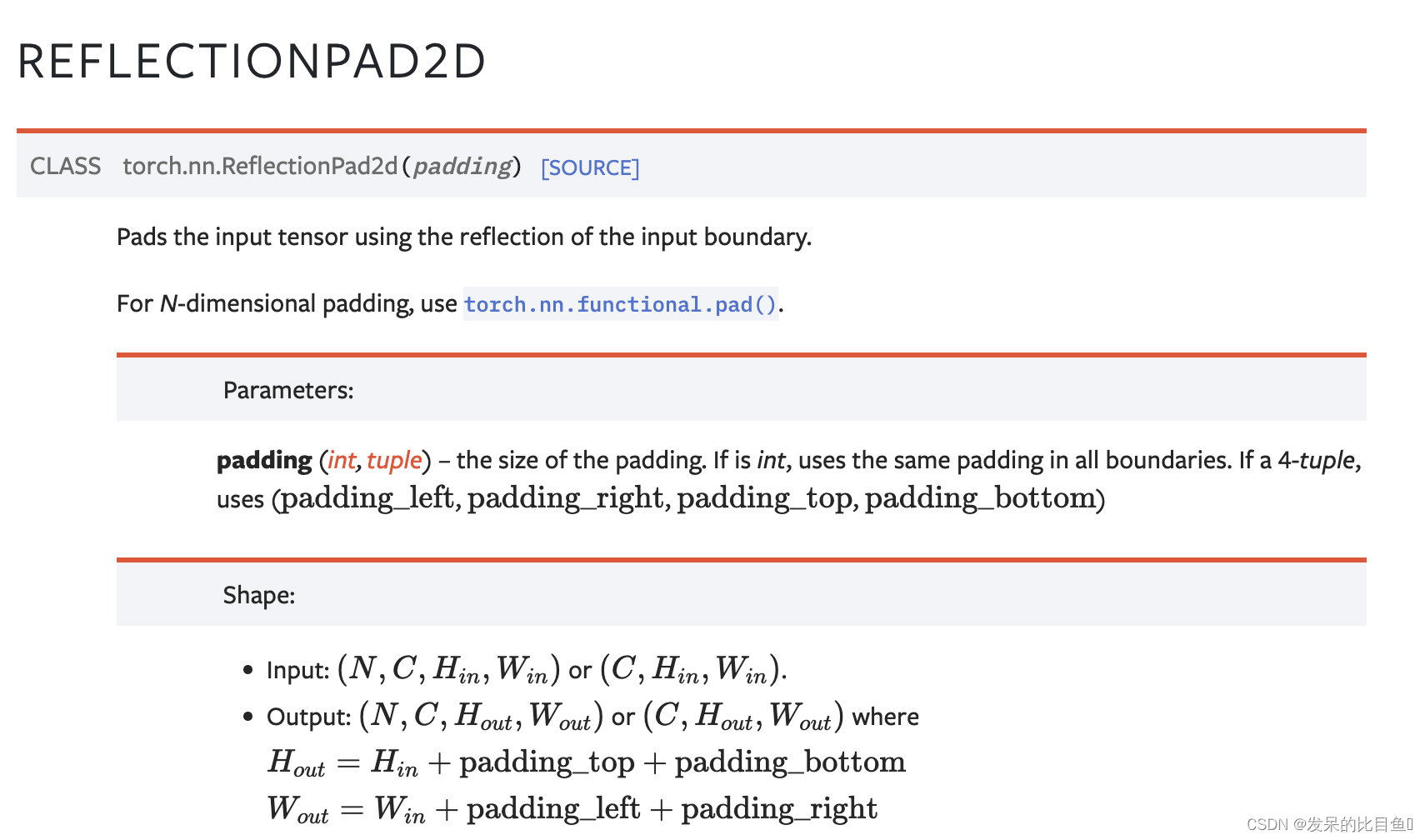
>>> m = nn.ReflectionPad2d(2)
>>> input = torch.arange(9, dtype=torch.float).reshape(1, 1, 3, 3)
>>> input
tensor([[[[0., 1., 2.],
[3., 4., 5.],
[6., 7., 8.]]]])
>>> m(input)
tensor([[[[8., 7., 6., 7., 8., 7., 6.],
[5., 4., 3., 4., 5., 4., 3.],
[2., 1., 0., 1., 2., 1., 0.],
[5., 4., 3., 4., 5., 4., 3.],
[8., 7., 6., 7., 8., 7., 6.],
[5., 4., 3., 4., 5., 4., 3.],
[2., 1., 0., 1., 2., 1., 0.]]]])
>>> # using different paddings for different sides
>>> m = nn.ReflectionPad2d((1, 1, 2, 0))
>>> m(input)
tensor([[[[7., 6., 7., 8., 7.],
[4., 3., 4., 5., 4.],
[1., 0., 1., 2., 1.],
[4., 3., 4., 5., 4.],
[7., 6., 7., 8., 7.]]]])
nn.ReflectionPad3d

>>> m = nn.ReflectionPad3d(1)
>>> input = torch.arange(8, dtype=torch.float).reshape(1, 1, 2, 2, 2)
>>> m(input)
tensor([[[[[7., 6., 7., 6.],
[5., 4., 5., 4.],
[7., 6., 7., 6.],
[5., 4., 5., 4.]],
[[3., 2., 3., 2.],
[1., 0., 1., 0.],
[3., 2., 3., 2.],
[1., 0., 1., 0.]],
[[7., 6., 7., 6.],
[5., 4., 5., 4.],
[7., 6., 7., 6.],
[5., 4., 5., 4.]],
[[3., 2., 3., 2.],
[1., 0., 1., 0.],
[3., 2., 3., 2.],
[1., 0., 1., 0.]]]]])
nn.ReplicationPad1d
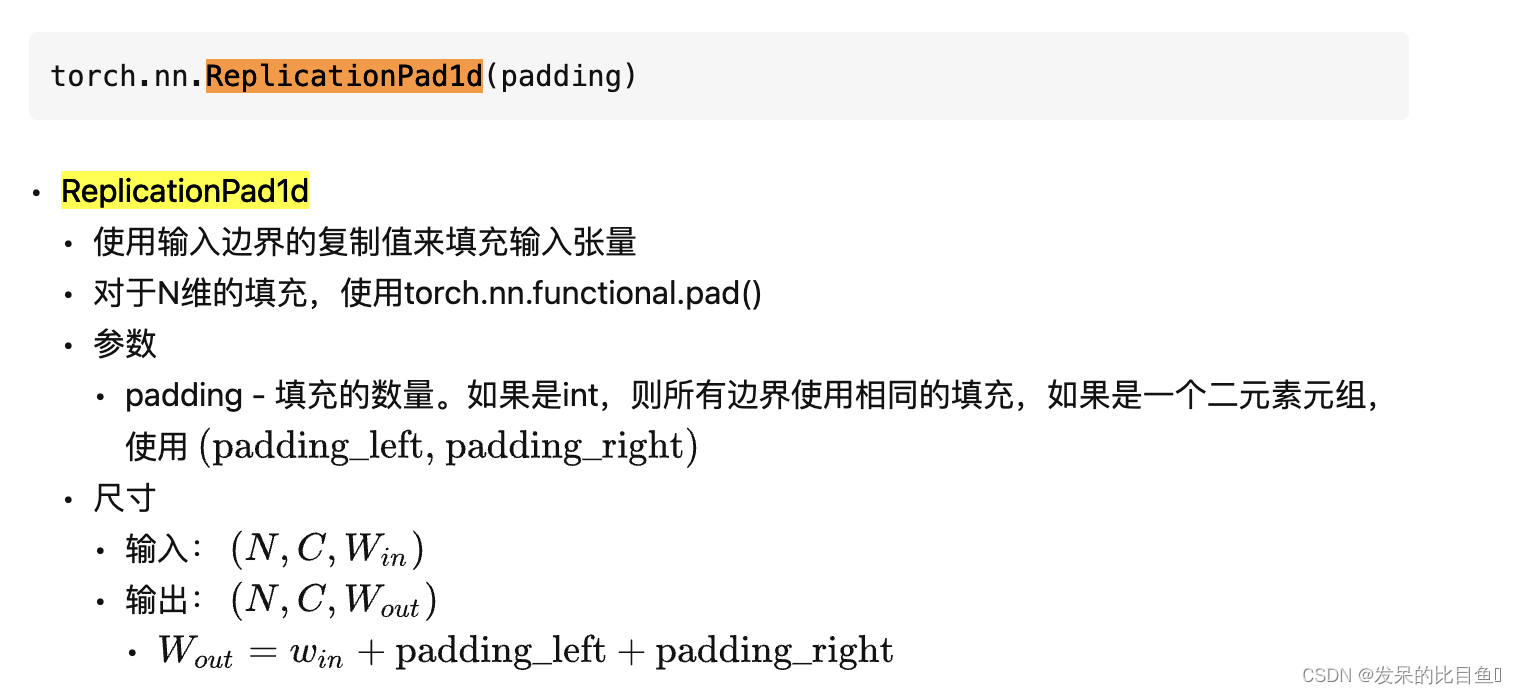

>>> m = nn.ReplicationPad1d(2)
>>> input = torch.arange(8, dtype=torch.float).reshape(1, 2, 4)
>>> input
tensor([[[0., 1., 2., 3.],
[4., 5., 6., 7.]]])
>>> m(input)
tensor([[[0., 0., 0., 1., 2., 3., 3., 3.],
[4., 4., 4., 5., 6., 7., 7., 7.]]])
>>> # using different paddings for different sides
>>> m = nn.ReplicationPad1d((3, 1))
>>> m(input)
tensor([[[0., 0., 0., 0., 1., 2., 3., 3.],
[4., 4., 4., 4., 5., 6., 7., 7.]]])
nn.ReplicationPad2d
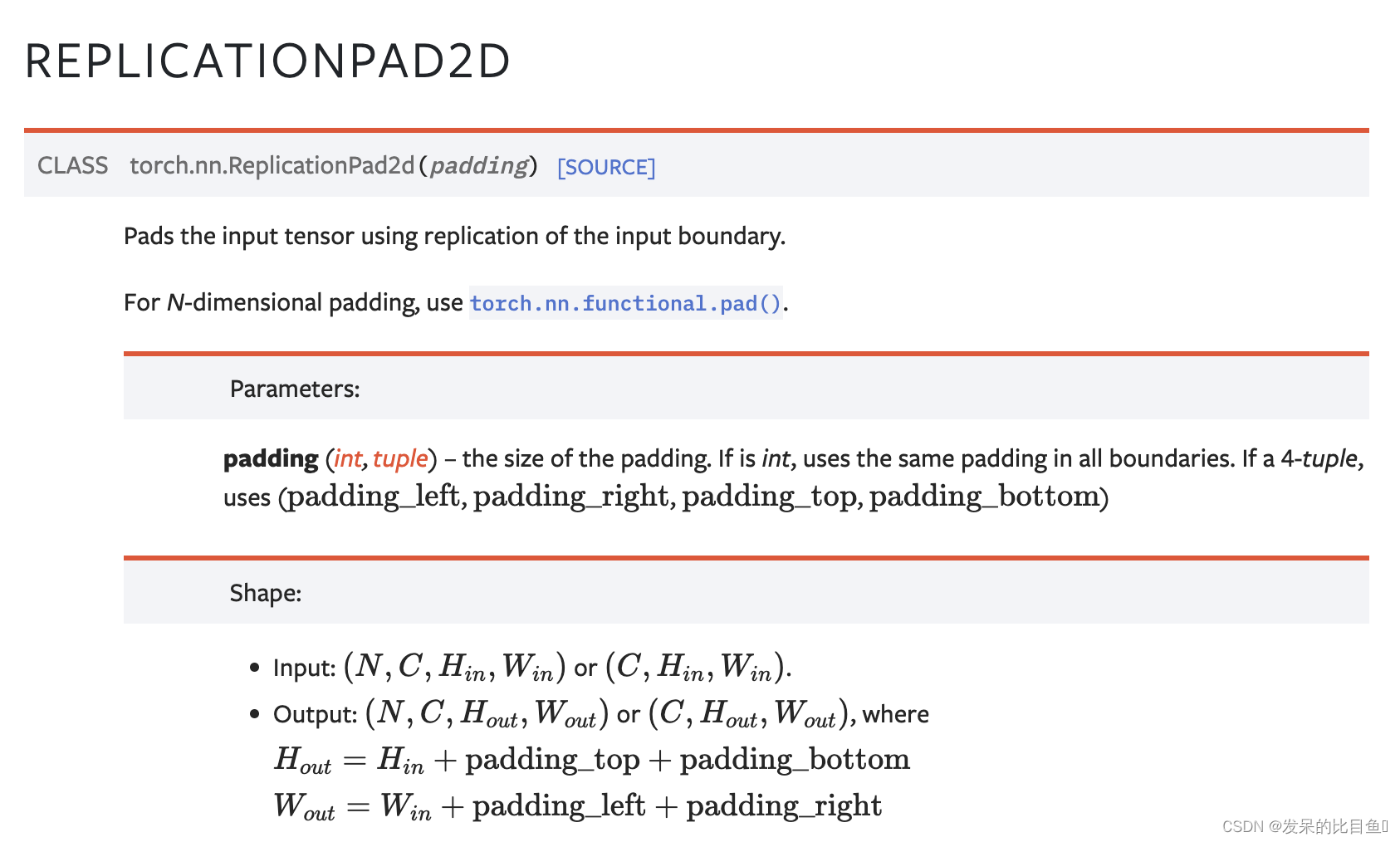
>>> m = nn.ReplicationPad2d(2)
>>> input = torch.arange(9, dtype=torch.float).reshape(1, 1, 3, 3)
>>> input
tensor([[[[0., 1., 2.],
[3., 4., 5.],
[6., 7., 8.]]]])
>>> m(input)
tensor([[[[0., 0., 0., 1., 2., 2., 2.],
[0., 0., 0., 1., 2., 2., 2.],
[0., 0., 0., 1., 2., 2., 2.],
[3., 3., 3., 4., 5., 5., 5.],
[6., 6., 6., 7., 8., 8., 8.],
[6., 6., 6., 7., 8., 8., 8.],
[6., 6., 6., 7., 8., 8., 8.]]]])
>>> # using different paddings for different sides
>>> m = nn.ReplicationPad2d((1, 1, 2, 0))
>>> m(input)
tensor([[[[0., 0., 1., 2., 2.],
[0., 0., 1., 2., 2.],
[0., 0., 1., 2., 2.],
[3., 3., 4., 5., 5.],
[6., 6., 7., 8., 8.]]]])
nn.ReplicationPad3d
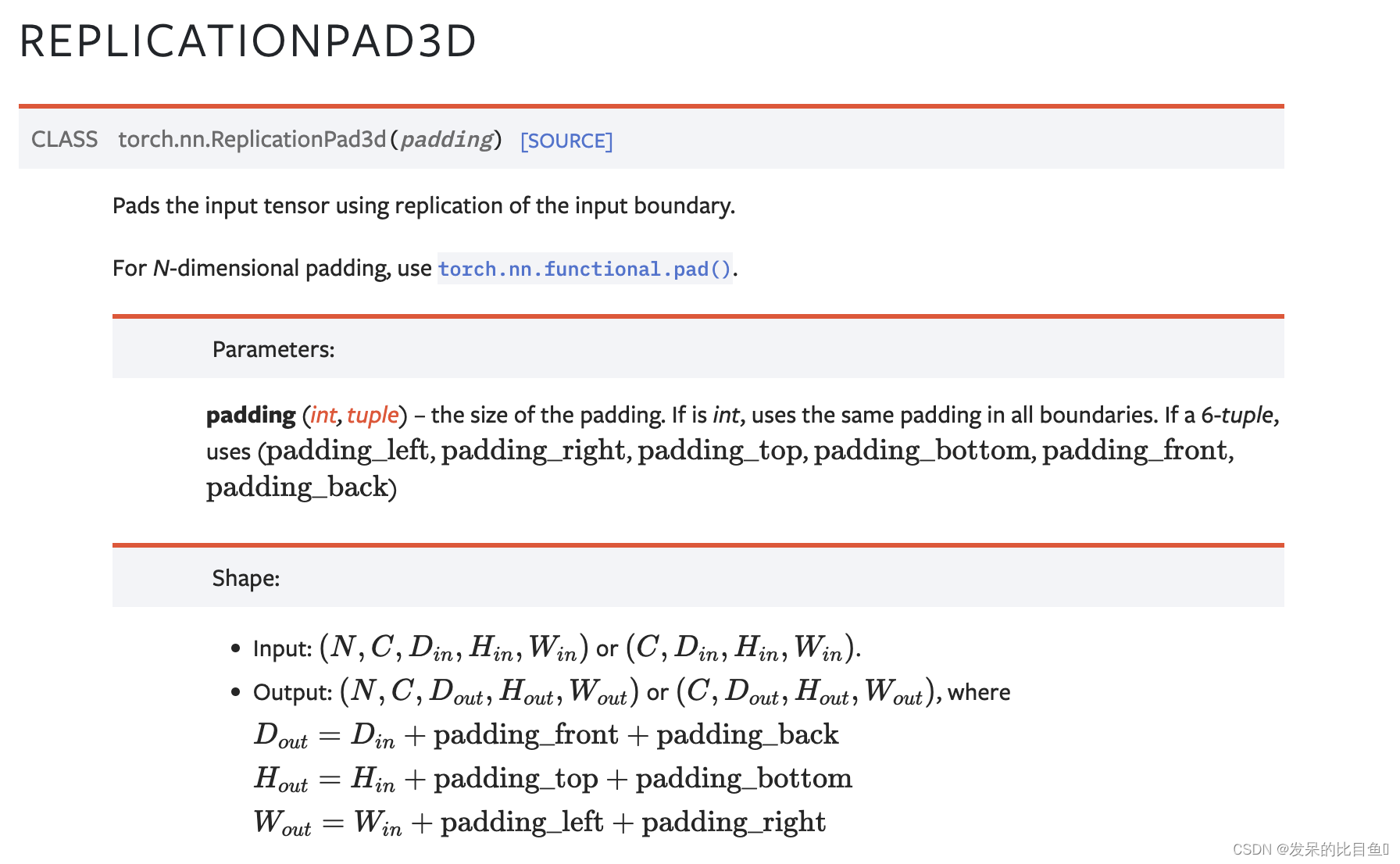
>>> m = nn.ReplicationPad3d(3)
>>> input = torch.randn(16, 3, 8, 320, 480)
>>> output = m(input)
>>> # using different paddings for different sides
>>> m = nn.ReplicationPad3d((3, 3, 6, 6, 1, 1))
>>> output = m(input)
nn.ZeroPad2d

>>> m = nn.ZeroPad2d(2)
>>> input = torch.randn(1, 1, 3, 3)
>>> input
tensor([[[[-0.1678, -0.4418, 1.9466],
[ 0.9604, -0.4219, -0.5241],
[-0.9162, -0.5436, -0.6446]]]])
>>> m(input)
tensor([[[[ 0.0000, 0.0000, 0.0000, 0.0000, 0.0000, 0.0000, 0.0000],
[ 0.0000, 0.0000, 0.0000, 0.0000, 0.0000, 0.0000, 0.0000],
[ 0.0000, 0.0000, -0.1678, -0.4418, 1.9466, 0.0000, 0.0000],
[ 0.0000, 0.0000, 0.9604, -0.4219, -0.5241, 0.0000, 0.0000],
[ 0.0000, 0.0000, -0.9162, -0.5436, -0.6446, 0.0000, 0.0000],
[ 0.0000, 0.0000, 0.0000, 0.0000, 0.0000, 0.0000, 0.0000],
[ 0.0000, 0.0000, 0.0000, 0.0000, 0.0000, 0.0000, 0.0000]]]])
>>> # using different paddings for different sides
>>> m = nn.ZeroPad2d((1, 1, 2, 0))
>>> m(input)
tensor([[[[ 0.0000, 0.0000, 0.0000, 0.0000, 0.0000],
[ 0.0000, 0.0000, 0.0000, 0.0000, 0.0000],
[ 0.0000, -0.1678, -0.4418, 1.9466, 0.0000],
[ 0.0000, 0.9604, -0.4219, -0.5241, 0.0000],
[ 0.0000, -0.9162, -0.5436, -0.6446, 0.0000]]]])
nn.ConstantPad1d

>>> m = nn.ConstantPad1d(2, 3.5)
>>> input = torch.randn(1, 2, 4)
>>> input
tensor([[[-1.0491, -0.7152, -0.0749, 0.8530],
[-1.3287, 1.8966, 0.1466, -0.2771]]])
>>> m(input)
tensor([[[ 3.5000, 3.5000, -1.0491, -0.7152, -0.0749, 0.8530, 3.5000,
3.5000],
[ 3.5000, 3.5000, -1.3287, 1.8966, 0.1466, -0.2771, 3.5000,
3.5000]]])
>>> m = nn.ConstantPad1d(2, 3.5)
>>> input = torch.randn(1, 2, 3)
>>> input
tensor([[[ 1.6616, 1.4523, -1.1255],
[-3.6372, 0.1182, -1.8652]]])
>>> m(input)
tensor([[[ 3.5000, 3.5000, 1.6616, 1.4523, -1.1255, 3.5000, 3.5000],
[ 3.5000, 3.5000, -3.6372, 0.1182, -1.8652, 3.5000, 3.5000]]])
>>> # using different paddings for different sides
>>> m = nn.ConstantPad1d((3, 1), 3.5)
>>> m(input)
tensor([[[ 3.5000, 3.5000, 3.5000, 1.6616, 1.4523, -1.1255, 3.5000],
[ 3.5000, 3.5000, 3.5000, -3.6372, 0.1182, -1.8652, 3.5000]]])
nn.ConstantPad3d

>>> m = nn.ConstantPad3d(3, 3.5)
>>> input = torch.randn(16, 3, 10, 20, 30)
>>> output = m(input)
>>> # using different paddings for different sides
>>> m = nn.ConstantPad3d((3, 3, 6, 6, 0, 1), 3.5)
>>> output = m(input)























 2711
2711











 被折叠的 条评论
为什么被折叠?
被折叠的 条评论
为什么被折叠?










